-
 Want to Pamper Your Taste-Buds this Pongal? Here are Mouth-Watering Pongal Recipes You can't Miss in 2019
Want to Pamper Your Taste-Buds this Pongal? Here are Mouth-Watering Pongal Recipes You can't Miss in 2019
-
 Diwali Snacks You Can Make in Your Kitchen, which Are As Healthy As They Are Delicious! (2021)
Diwali Snacks You Can Make in Your Kitchen, which Are As Healthy As They Are Delicious! (2021)
-
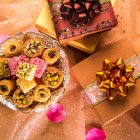 Make Gifting Easy this Festive Season with a Gift Pack: 11 Awesome Ideas for Diwali Gift Packs for 2019
Make Gifting Easy this Festive Season with a Gift Pack: 11 Awesome Ideas for Diwali Gift Packs for 2019
Seek Blessings from Durga Maa with These Popular Prasad Recipes
Navratri is the time of the year when Hindus all across the world adopt a calm and meditative lifestyle by virtue of refraining from worldly habits including certain types of food. Navratri is celebrated throughout a duration of nine days marked with ritualistic fasting and poojas. Goddess Durga is worshipped in all fervour and offered prasad or naivedyas on different days. Here is a simple guide for you to follow if you are short on ideas to prepare Navratri prasad.
Significance of Prasad for Navratri
The Hindu festival of Navratri literally translates to nine nights. On each of these nine nights, people worship goddess Durga in nine different manifestations or avatars. It is mandatory to offer prasad to Durga Maa on all these nine days. Navratri prasad can be either sweet or savoury. Every household gives due importance to the act of offering the prasad or bhog to the Goddess. The prasad is prepared and served with utmost cleanliness and dedication. There are certain norms or basic guidelines that people usually follow while preparing the prasad. Keep reading as we will be discussing these towards the end of the article.
Our Pick of the Most Popular Navratri Prasad Recipes in India
Navratri prasad offered to Goddess Durga Maa is said to bring in good luck, prosperity and good health to the devotees. This is a common notion in all states across India and people all over the country tend to follow the same tradition of preparing and offering prasad. Here are some of the most popular North Indian and south Indian Navratri recipes.
Popular North Indian Navratri Prasad Recipes
North Indian Navratri prasad recipes are usually sweet, yet there are plenty of savoury prasad recipe ideas too. The prasad or bhog is strictly prepared with no ingredients like onion and garlic. The main four prasad offered to Durga Maa during Navratri are:
• Sooji Ka Halwa
• Malpua
• Black chana
• Halwa puri
Sooji Ka Halwa
This is one of the oldest and commonly prepared of Navratri prasad recipes. Sooji Ka Halwa is a sweet dish that is prepared primarily from semolina (sooji), ghee and sugar. This recipe is an all time favorite for Navratri poojas.
Ingredients:-
- Water – 1 ½ cups
- Sugar – 1 cup
- Cardamom powder – ¼ tsp
- Ghee- 1 cup
- Sooji (semolina)- 1 cup
- Cashew nuts- 8 to 10 numbers
- Almonds- 8 to 10 numbers
- Raisins- 1 tbsp
- Saffron milk- 2 tbsp
Instructions:-
- Heat a pot with water. Add the sugar to it and let it boil. Stir the mixture till the sugar completely dissolves and combines well with the water. Let it simmer on low heat while you work on the rest of the process.
- In another heated pan, pour in the ghee and add the sooji (semolina) to it. Now, stir continuously on medium heat. This should avoid the formation of any lumps in the sooji. Fry till the sooji is cooked and forms a thick mixture.
- Add in the chopped dry nuts (cashew and almonds), raisins and keep stirring. To this, you can now add the prepared sugar mixture.
- Cover the pan. Cook for two minutes. Once cooked, add the saffron milk to the halwa. Stir and cook for another two minutes. Garnish with raisins and nuts.
Tip: Always be careful while adding the sugar syrup, as the mixture spurts out while pouring.
Malpua
Malpua is a sweet pancake dessert that is very popular in North India as Navratri prasad. Malpua is traditionally prepared with khoya or Mawa (thick evaporated milk). However, to keep things easy and instant, we have included this super easy recipe to prepare malpua with milk powder!
Ingredients:-
- Plain flour (Maida)- 1 cup
- Milk powder- ½ cup
- Sooji (semolina)- 2 tbsp
- Fennel seeds (powdered)- ½ tsp
- Milk- 3/4 cup
- Sugar – 1 cup
- Water- ½ cup
- Cardamom powder- ¼ tsp
- Oil- for frying
- Dried nuts (chopped)- for garnishing
Instructions:-
- In a bowl, add Maida, milk powder, sooji and the fennel seeds powder. Combine them well.
- Pour in the milk and whisk well till a smooth batter is formed. You can add milk in small batches to reach the desired constituency of the batter. Always make sure that no lumps are formed while preparing the batter.
- Let the thick flowing batter rest for 20 minutes. Keep this aside.
- In another heated pan, add the sugar and water and combine well till the sugar dissolves.
- Boil for five minutes till the syrup is slightly thickened. Now, add the cardamom powder and mix well. Cover and keep aside.
- In a pan, heat oil for frying. Take a ladle full of the batter and pour into the hot oil.
- Flip on both the sides. Cook till golden brown.
- Once cooked completely place them in the prepared sugar syrup. Let them soak well for five minutes.
- Remove the malpuas from the sugar syrup and garnish with chopped dried nuts before serving.
Black Chana
Kala chana or sookha kala chana is a popular spicy Navratri prasad. It is easy to prepare and a favorite among spicy prasad lovers.
Ingredients:-
- Bengal gram (kala chana)- ½ cup. These are soaked overnight in water.
- Ghee- 2 tbsp
- Green chilli (chopped)- 2
- Ginger (chopped)- 2-inch piece
- Coriander powder -1/2 tsp
- Red chilli powder- 1/3 tsp
- Cumin powder- ½ tsp
- Rock salt- as per taste
Instructions:-
- In a pressure cooker, add the kala chana and the water. To this you can add a pinch of rock salt for it to get cooked fast.
- Close the lid and cook on medium heat till 4-5 whistles.
- In a heated pan, melt the ghee and add the chopped ginger and green chilli. Fry for five minutes.
- Reduce the flame and add all the spices. Combine them well and stir continuously till done.
- To this, add the cooked kala chana. Add salt as per taste.
- Cover and cook for around 10 minutes.
Halwa Puri
Halwa puri is a famous combination that is a very popular prasad or bhog recipe for Navratri.
Ingredients:-
For the puri
- Wheat flour- 2 cups
- Salt- ½ tsp
- Water- as required
- Semolina (sooji)- ½ cup
- Ghee- ¼ cup
- Sugar- ½ cup
- Cardamom powder- ½ tsp
- Cashew (chopped)- 1 tbsp
- Raisins- 1 tbsp
- Almond flakes- 1 tbsp
For halwa :-
Instructions:-
For the puri
- Combine the wheat flour and water and combine well. Knead into a smooth dough.
- make small balls with the dough and flatten it as circles using a rolling pin.
- Fry in oil till both sides of the puri turns golden brown
For the halwa:-
- Preheat a pan, and add the ghee to it.
- Add the semolina to the melted butter and stir continuously over medium heat.
- Once the sooji turns brown, add the chopped nuts and raisins.
- Add sugar and water and combine well.
- Cover and cook for few minutes.
- Add cardamom powder and stir till cooked well.
Popular South Indian Navratri Prasad Recipes
South Indian Navratri recipes are quite similar to their north Indian counterparts, but with slight differences. The most popular ones are:
• Whole Green Moong Sundal
• Sweet Pongal
• Fruit kesari
• Coconut burfi
Whole Green Moong Sundal
This Navratri prasad recipe is usually prepared on the first day of Navratri in South India.
Ingredients:-
- Whole green moong dal- 1 cup
- Grated coconut- 1 cup
- Asafetida- a pinch
- Curry leaves- a few
- Mustard seeds- 1 tsp
- Urad dal-1 tsp
- Dry red chilies- 1 or 2
- Salt- as required
- Oil- as required
Instructions:-
- Wash and soak the green moong overnight.
- Add required water and salt. Cook in the pressure cooker.
- Heat oil in a pan, add mustard seeds, Urad dal, dry chilli, few curry leaves and asafetida.
- Add in the boiled moong and grated coconut. Stir well till combined well.
Sweet Pongal
Sweet Pongal, known as chakkara ponkali in Telugu and sakkarai Pongal in Tamil is a famous Navratri prasad recipe. It is traditionally prepared on all religious festivals in south India.
Ingredients:-
- Rice- ½ cup
- Moong dal- ½ cup
- Cardamom powder- 1/8 tsp
- Ghee- 2- 3 tbsp
- Raisins- 1 tbsp
- Cashew nuts- 12
- Cloves- 2 (optional)
- Sliced or chopped Coconut pieces- 2 tbsp
- Powdered or grated Jaggery- ½ cup
- Water- 2 ¼ cups
Instructions:-
- In a heavy bottom pan or pressure cooker, roast the cooked dal on medium heat till the dal turns fragrant.
- To this add the rice and combine with the dal.
- Wash the mix of both and drain well.
- Add this to a pressure cooker and cook well till done for 3 whistles.
- To make the syrup, add powdered or grated jaggery to a saucepan.
- Pour in the water and cook on low flame till the jaggery melts and turns thick and sticky.
- Filter this syrup and add to the cooked rice and dal along with the cardamom powder.
- Cook for a few minutes.
- In a pan, add ghee and fry the coconut pieces, cashew nuts and raisins.
- Add this to the prepared Pongal.
Fruit kesari
This special dish is a popular Navratri recipe in south India and closely resembles the sooji ka halwa prepared in the North.
Ingredients:-
- Sooji (semolina)- 1 ½ cup
- Finely Chopped fruits – 1 ½ cups (mango, pineapple, papaya)
- Ghee- 2 tbsp
- Water- 3 ½ cups
- Sugar- ¾ cups
- Cashews and raisins- as required
- Cardamom powder- ¼ tsp
- Saffron- a pinch
Instructions:-
- Roast the semolina in the pan till it becomes fragrant. Keep this aside.
- Fry the nuts and raisins in ghee. Set aside.
- In ghee, you can fry the chopped fruits for around 3 minutes.
- To this, add the sugar, water and saffron and wait till it boils.
- Add cardamom powder and the roasted semolina. Stir continuously to avoid lumps.
- Cover and cook till semolina are done well.
- Add the fried nuts and raisins.
Coconut Burfi
Coconut burfi or thengai burfi is an easy to make dish that is very popular in the south as a Navratri prasad or naivedyam.
Ingredients:-
- Grated coconut- ½ cup (heaped)
- Sugar- ½ cup
- Cardamom powder- ¼ tsp
- Milk- 1 tbsp
- Semolina or rava- ½ tsp optional)
- Fried gram dal- 1 tbsp
- Ghee- to grease the plate
Instructions:-
- Grease a steel plate with a little amount of ghee and keep aside.
- In a wide pan or kadai, roast the grated coconut till it gives an aromatic smell.
- To this, add the sugar, milk and semolina.
- On medium flame, combine the ingredients well and keep stirring.
- When the sugar starts melting, reduce the flame and stir continuously till the mixture leave the sides of the pan.
- Add cardamom powder and the fried gram dal and give a nice stir.
- Transfer this mixture to the greased plate and level the mixture with the back of a spoon or a flat spatula.
- As the mixture cools, the burfi hardens and can be cut into small pieces with a sharp knife.
Basic Guidelines to Follow While Preparing Prasad
Prasad literally means “a gracious gift”. This is usually the religious offering (mostly food) that devotees present before the deities. After pooja, the bhog or prasad are then consumed by the worshippers believing that the prasad has the blessings of the deity.
If you are preparing Navratri prasad for nine days as part of the ritual, then we suggest that you keep the following points in mind while doing so:
- According to Hindu beliefs, only pure vegetarian offerings are considered to be acceptable as prasad to the deity.
- Navratri prasad recipes are usually free from food ingredients like onion, garlic or mushrooms. These items are said to excite the passionate elements of the human psycho-physical constitution. However, there may be exceptions to this depending on particular recipes and their place of origin.
- Preparation of the Navratri prasad is considered to be an act that is highly devotional and requires utmost dedication. Even tasting the prasad, before it is offered to the goddess is generally considered inauspicious.
- It is highly mandatory that the Navratri prasad be prepared in the cleanliness surroundings. The kitchen utensils must be cleaned well before cooking. It is also a common practice for the person preparing the prasad to take a bath and keep themselves clean before the actual prasad preparation.
- A conducive environment needs to be maintained in the kitchen. It is said that the atmosphere must be calm and peaceful while the preparer must also be in a contemplative frame of mind
- A meditative consciousness of love and devotion for the God is a must while offering the prasad during the pooja.
-
 Ever Wondered How to Make Paneer at Home? Here is the Complete Guide to Take Out Soft and Creamy Paneer from Milk at Home (2021)
Ever Wondered How to Make Paneer at Home? Here is the Complete Guide to Take Out Soft and Creamy Paneer from Milk at Home (2021)
-
 Looking to Spice Up Your Next Meal? Here Is a List of Best Food Delivery Apps in India for 2019
Looking to Spice Up Your Next Meal? Here Is a List of Best Food Delivery Apps in India for 2019
-
 समुद्र तट, प्रकृति का जादुई सौंदर्य, अनूठा आकर्षण सब कुछ है - पांडिचेरी यात्रा के दौरान वहाँ क्या देखें, क्या खाएं, कहां खरीदारी करें: पांडिचेरी में घूमने के 10 सर्वश्रेष्ठ स्थान (2020)
समुद्र तट, प्रकृति का जादुई सौंदर्य, अनूठा आकर्षण सब कुछ है - पांडिचेरी यात्रा के दौरान वहाँ क्या देखें, क्या खाएं, कहां खरीदारी करें: पांडिचेरी में घूमने के 10 सर्वश्रेष्ठ स्थान (2020)
-
 If You are Planning a Trip to Pondicherry in 2020, These are the Places to Visit for Foodies, Beach Bums and Shopaholics!
If You are Planning a Trip to Pondicherry in 2020, These are the Places to Visit for Foodies, Beach Bums and Shopaholics!
-
 Add Some Splendour to the Valentine's Day By Taking Charge And Gifting Your Boyfriend These 10 Awesome Gifts to Make His Day (2019)
Add Some Splendour to the Valentine's Day By Taking Charge And Gifting Your Boyfriend These 10 Awesome Gifts to Make His Day (2019)
Focus on Better Eating
The eating pattern is very simple during fasting. The modern days and restaurant-style eating has challenged the Navratri recipes and style of eating to evolve. It is more of “Charat” than “varat”. My only advice is Keep It Simple! Start with taking a bath, offering prayers and meditation. Then go for Fruits and Milk (Tea/Coffee) base breakfast. Lunch can be followed with some yogurt, potatoes or other vegetable and some fruits. Munch on some nuts and fruit for late noon snack. Dinner can be fasting flours base on flatbreads & vegetables and yogurt. Focus on better eating and not more eating. Believe me, Navratri fasting is not depriving you of food but is disciplining you for good eating.



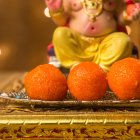
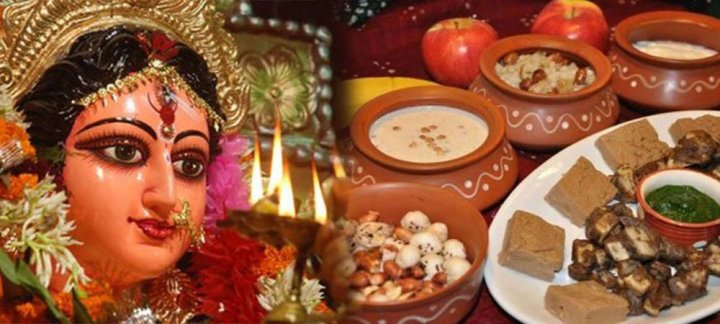
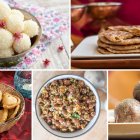
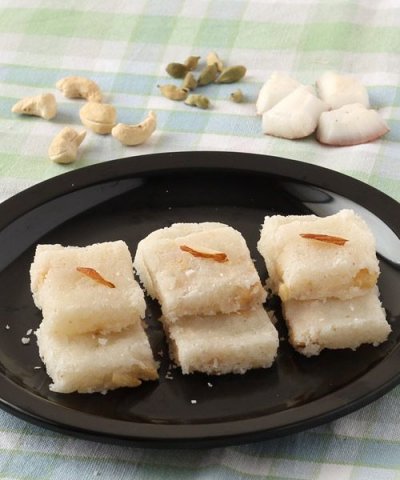
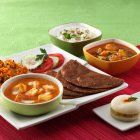


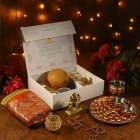

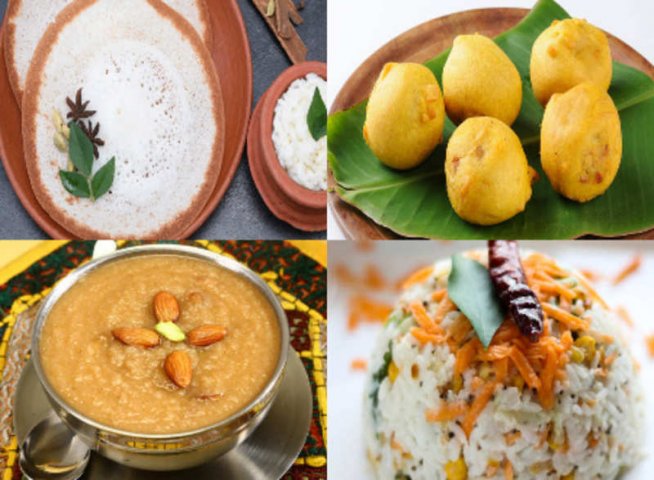
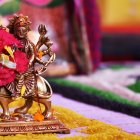
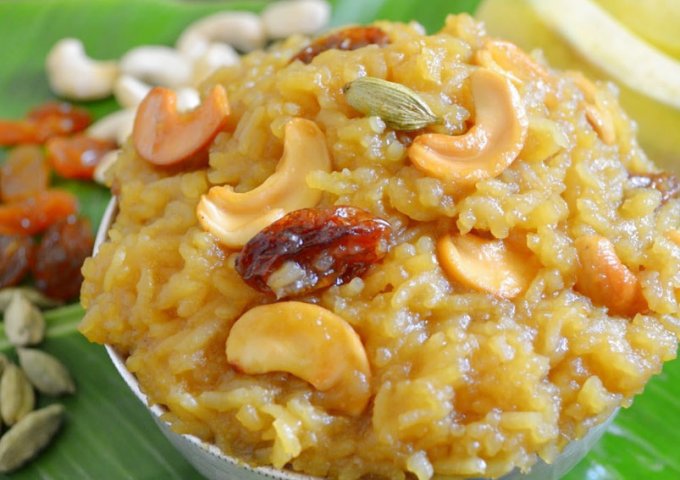
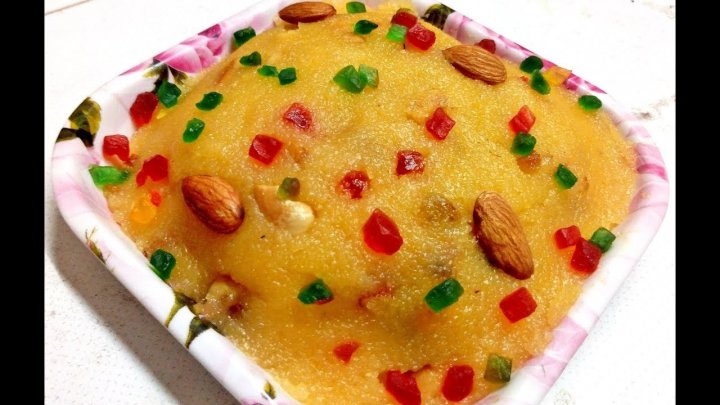
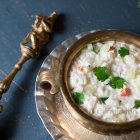
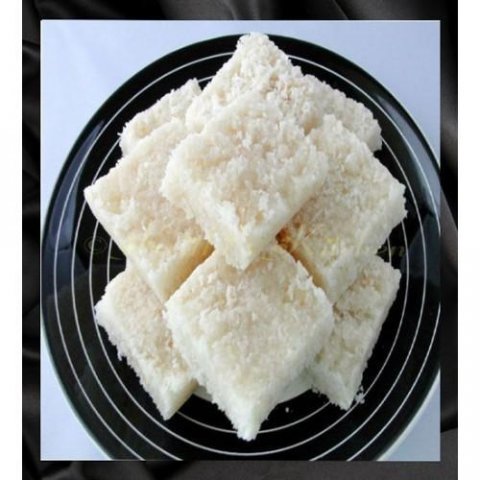

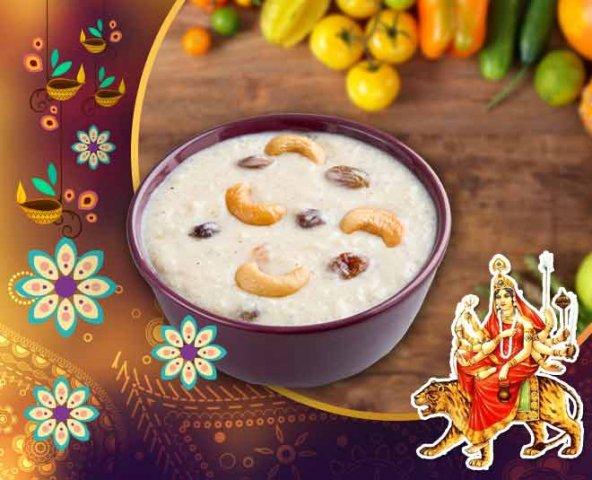
 Highlight the Best Facets of Your Incomparable Beauty: Discover the Best Face Highlighter Currently Available in India and Everything You Need to Know About Using Face Highlighters for Maximum Effect (2023)
Highlight the Best Facets of Your Incomparable Beauty: Discover the Best Face Highlighter Currently Available in India and Everything You Need to Know About Using Face Highlighters for Maximum Effect (2023)
 Forget the Blemishes and Get that Picture Perfect Flawless Radiance on Your Face: Check out the Best Foundations for Oily Skin Currently Available in India and Everything You Need to Know About Makeup Foundations (2023)
Forget the Blemishes and Get that Picture Perfect Flawless Radiance on Your Face: Check out the Best Foundations for Oily Skin Currently Available in India and Everything You Need to Know About Makeup Foundations (2023)
 Make Your Presence Felt Wherever You Go: Discover the Best Perfumes Under 2000 for Both Men and Women to Announce Your Arrival and Make Any Occasion Memorable (2023)
Make Your Presence Felt Wherever You Go: Discover the Best Perfumes Under 2000 for Both Men and Women to Announce Your Arrival and Make Any Occasion Memorable (2023)
 Protect Your Oily Skin from the Harmful Rays of the Sun: Discover the Best Gel Based Sunscreens for Oily Skin and Everything You Need to Know Before Buying One (2023)
Protect Your Oily Skin from the Harmful Rays of the Sun: Discover the Best Gel Based Sunscreens for Oily Skin and Everything You Need to Know Before Buying One (2023)
 Minor Blemishes and Wrinkles Affecting Your Confidence? Check out the Best BB Creams to Conceal Your Worries and Nourish Your Skin to Restore the Healthy, Radiant and Glowing Complexion Back Again (2023)
Minor Blemishes and Wrinkles Affecting Your Confidence? Check out the Best BB Creams to Conceal Your Worries and Nourish Your Skin to Restore the Healthy, Radiant and Glowing Complexion Back Again (2023)
